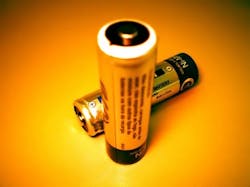According to the researchers, the method could hold several advantages over RO membrane processes.
The battery device can be small or large, adapting to different applications, while reverse osmosis plants must be very large to be efficient and cost effective, Smith said.
The pressure required to pump the water through is much less, since it's simply flowing the water over the electrodes instead of forcing it through a membrane. This translates to much smaller energy needs, close to the very minimum required by nature, which in turn translates to lower costs.
Smith and Dmello conducted a modeling study to see how their device might perform with salt concentrations as high as seawater, and found that it could recover an estimated 80% of desalinated water. Their simulations don't account for other contaminants in the water, however, so they are working toward running experiments with real seawater.
In addition, the rate of water flowing through it can be adjusted more easily than other types of desalination technologies that require more complex plumbing, the university said.
Smith said: "In a conventional battery, the separator allows salt to diffuse from the positive electrode into the negative electrode. That limits how much salt depletion can occur. We put a membrane that blocks sodium between the two electrodes, so we could keep it out of the side that's desalinated."
###
Read more
Solar-powered seawater desalination research contract signed in Abu Dhabi
Reclamation awards $1.49m for nine desalination, water research projects




